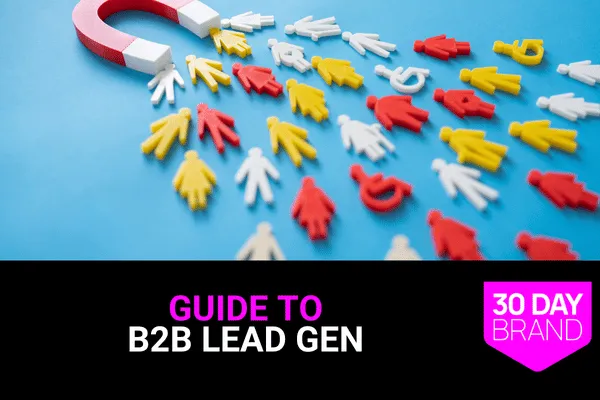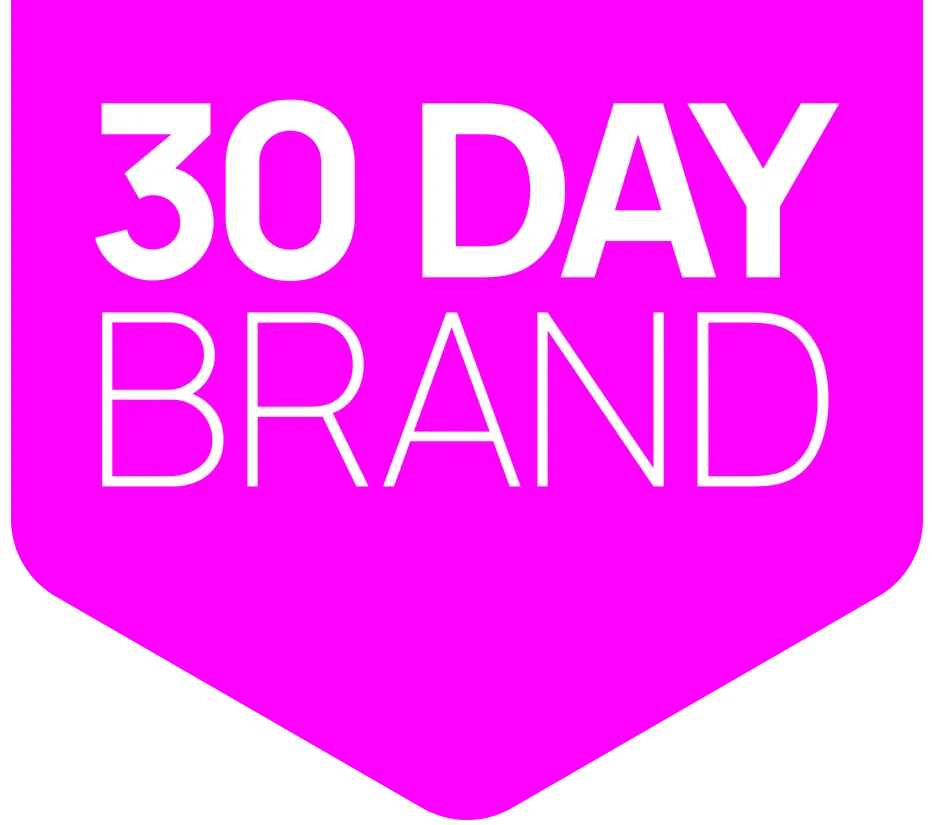
B2B Lead Generation: Systems, Agencies, and ROI Benchmarks
Why B2B Lead Generation Matters
Most founder-led B2B firms face the same painful reality: outbound cold calls and generic outreach no longer work. Prospects ignore templated InMails. Ad costs rise, but pipelines stay inconsistent. Without structured lead generation systems, growth is unpredictable and stressful.
B2B lead generation is the process of identifying, attracting, and converting qualified business prospects into sales opportunities. It matters because 68% of B2B companies struggle with consistent lead flow (CSO Insights, 2024).
For agencies, consultants, and service providers, building predictable pipelines requires blending outbound, inbound, and account-based tactics into repeatable systems.
👉 Before scaling, ensure your business messaging framework resonates with decision-makers. Weak messaging kills even the best outreach.
B2B Lead Generation Best Practices: 10 Core Items
Random outreach fails. Proven B2B lead gen systems create predictable, scalable revenue.
1. Define Your B2B ICP (Ideal Client Profile)
Definition: A detailed profile of your best-fit customer accounts and decision-makers.
Why it matters: Companies with precise ICPs see 2.5× higher close rates (Forrester, 2024).
How to implement:
Audit closed-won deals to find patterns.
Define firmographics (industry, size, revenue).
Add decision-maker roles (CFO, CMO, VP).
Identify pain points and buying triggers.
Use LinkedIn Sales Navigator filters.
Tools: HubSpot, LinkedIn Sales Navigator, Apollo.io.
Case study: A B2B IT services firm narrowed its ICP from “any SMB” to “healthcare firms with 100–500 employees.” Lead-to-opportunity conversions rose 2.3× in 3 months.
Result: Higher win rates and shorter sales cycles.
Time required: 1 week.
👉 Related: B2B lead generation agency.
2. Build Multi-Touch Campaigns
Definition: Coordinated sequences of outreach that use multiple touches and channels.
Why it matters: B2B buyers need 8+ touches before responding. Multi-touch systems create familiarity and trust.
How to implement:
Sequence email + LinkedIn + retargeting ads.
Send value-first offers (guides, case studies).
Space touches over 3–4 weeks.
Personalize based on role and industry.
Tools: Lemlist, Outreach.io, HubSpot Sequences.
Case study: A SaaS firm using single-email blasts saw 1.2% reply rates. After moving to a 5-step multi-touch cadence, replies hit 6.8% and SQL volume tripled.
Result: More conversations with qualified buyers.
Time required: 2 weeks setup.
👉 Related: outsourced lead generation companies.
3. Use LinkedIn for Targeted Outreach
Definition: Leveraging LinkedIn’s professional network for precision prospecting.
Why it matters: 50% more qualified leads come from LinkedIn than any other channel (LinkedIn, 2024).
How to implement:
Optimize company and personal profiles with clear ICP messaging.
Build target lists using LinkedIn filters.
Send personalized connection notes.
Publish authority content weekly.
Use automation sparingly for scale.
Tools: LinkedIn Sales Navigator, Shield, Expandi.
Case study: A consulting agency launched LinkedIn campaigns targeting CFOs. Over 90 days, they gained 450 new connections, 72 SQLs, and closed 5 deals worth $160k.
Result: High-quality leads from key decision-makers.
Time required: 2–4 weeks setup.
👉 Related: marketing consultant for small business.
4. Deploy Account-Based Marketing (ABM)
Definition: A highly targeted strategy that treats each high-value account as its own “market.”
Why it matters: Companies using ABM generate 208% more revenue (HubSpot, 2023).
How to implement:
Select 20–50 high-value target accounts.
Map multiple stakeholders in each account.
Create personalized campaigns (emails, ads, content).
Use retargeting and direct mail for multi-channel impact.
Tools: Demandbase, 6sense, Terminus.
Case study: A SaaS security provider ran ABM on 25 Fortune 1000 companies. Within 12 months, they landed 4 new enterprise accounts worth $1.8M ARR.
Result: Larger deals and deeper client relationships.
Time required: 4–6 weeks setup.
👉 Related: B2B demand generation agencies.
5. Create Conversion-Optimized Landing Pages
Definition: Dedicated landing pages designed to turn visitors into leads.
Why it matters: Landing pages focused on one offer convert 55% higher than general websites (HubSpot, 2023).
How to implement:
Use one CTA per page (e.g., “Book a Demo”).
Add proof: testimonials, logos, case studies.
Keep forms short (3–5 fields).
Run A/B tests on headlines, CTAs, and visuals.
Tools: Unbounce, Instapage, HubSpot CMS.
Case study: A consulting firm sent ad traffic to its homepage and saw 0.8% conversion. After launching a dedicated demo page with testimonials, conversion rose to 3.7% in 6 weeks.
Result: More leads from the same traffic.
Time required: 1–2 weeks.
6. Automate Email Drip Campaigns
Definition: Sequences of automated emails that educate and nurture prospects over time.
Why it matters: Nurtured leads make 47% larger purchases than non-nurtured (Marketo, 2023).
How to implement:
Build welcome series for new leads.
Segment lists by role, industry, or stage.
Mix educational and offer-based emails.
Trigger drips from behavior (downloads, clicks).
Tools: ActiveCampaign, HubSpot, Mailchimp.
Case study: A SaaS firm added a 5-email drip to demo requests. SQL close rates increased 23%, and average deal size rose 18%.
Result: Warmer, higher-value opportunities.
Time required: 1–2 weeks.
👉 Related: done-for-you marketing services.
7. Blend Inbound and Outbound Tactics
Definition: Combining inbound (SEO, content, ads) with outbound (cold outreach, LinkedIn) for balanced pipelines.
Why it matters: Firms that rely on only one method face pipeline risk. Inbound + outbound blended increases opportunities by 35% (HubSpot, 2023).
How to implement:
Drive inbound traffic via SEO + content offers.
Use outbound to target dream accounts.
Retarget visitors with ads for stronger impact.
Share data between inbound + outbound teams.
Case study: A B2B SaaS blended LinkedIn outreach with content-driven inbound offers. Result: 28% more SQLs and a 34% lower CPL compared to outbound alone.
Result: More resilient and scalable pipeline.
Time required: Ongoing, with 1–2 months to balance.
👉 Related: outsourced lead generation.
8. Use CRM and Sales Automation Tools
Definition: Centralizing lead management with automation for efficiency and speed.
Why it matters: B2B marketers using automation generate 451% more qualified leads (Annuitas, 2024).
How to implement:
Capture all leads in one CRM.
Automate follow-ups (emails, tasks).
Score leads based on engagement.
Sync with ad + outreach tools for closed-loop reporting.
Tools: HubSpot, Salesforce, Pipedrive.
Case study: A consulting firm replaced spreadsheets with HubSpot. Lead response time dropped from 48 hours to under 8 hours, increasing SQL conversions by 31%.
Result: Faster follow-up and better close rates.
Time required: 2–3 weeks.
9. Measure SQLs, Not Just MQLs
Definition: Sales-qualified leads (SQLs) are prospects ready for direct sales conversations.
Why it matters: MQL volume often misleads. Focusing on SQLs ensures marketing drives revenue.
How to implement:
Define SQL criteria with sales team.
Track conversion from MQL → SQL → Closed Won.
Drop low-quality sources quickly.
Reward channels delivering SQLs, not just clicks.
Case study: A SaaS company shifted reporting from MQLs to SQLs. Marketing spend was reallocated, CAC dropped 19%, and revenue grew 26%.
Result: Higher ROI and tighter marketing-sales alignment.
Time required: 1–2 weeks.
10. Align Sales and Marketing Teams
Definition: Sales and marketing must share goals, definitions, and data.
Why it matters: Aligned sales + marketing teams are 67% more efficient (Marketo, 2023).
How to implement:
Define lead stages and SLAs together.
Share dashboards across teams.
Hold weekly syncs to review pipeline.
Co-own revenue KPIs.
Case study: A professional services firm had 300+ MQLs ignored by sales. After implementing shared dashboards, SQL acceptance rose to 89% and pipeline revenue increased 33%.
Result: Faster follow-ups, better ROI.
Time required: 2–3 weeks alignment.
👉 Related: B2B lead generation companies.
B2B Lead Generation Implementation Guide
Step 1: Audit Current B2B Lead Sources
Review inbound vs outbound lead contribution. Tools: GA4, CRM dashboards.
Result: Visibility into performance gaps.
Step 2: Select Lead Gen Channels (Inbound + Outbound)
Choose the right blend of SEO, content, LinkedIn, PPC, and email.
Result: Balanced, resilient pipeline.
Step 3: Create Messaging and Offers
Develop content, lead magnets, and outreach scripts tailored to ICP pain points.
Result: Stronger conversion rates.
Step 4: Launch Targeted Campaigns
Deploy campaigns across channels with clear KPIs.
Result: Active lead flow.
Step 5: Optimize Conversion Funnel
Measure CPL, SQLs, and ROI. Test messaging, landing pages, and targeting monthly.
Result: Continuous ROI growth.
Metrics & Measurement for B2B Lead Generation
B2B lead generation must be tied to measurable outcomes. Key benchmarks include:
Companies using ABM generate 208% more revenue (HubSpot, 2023).
B2B marketers see 50% more qualified leads from LinkedIn vs. other platforms (LinkedIn, 2024).
Aligned sales + marketing teams are 67% more efficient (Marketo, 2023).
Automation boosts qualified leads by 451% (Annuitas, 2024).
Inbound B2B leads cost 61% less than outbound (HubSpot, 2023).
Case study: A SaaS cybersecurity firm layered inbound content with outbound ABM. Within 9 months, inbound CPL was 58% lower, and ABM landed 3 enterprise contracts worth $2.3M ARR.
Common Mistakes in B2B Lead Generation
Focusing only on MQLs – creates volume, not revenue.
Overusing automation – generic spam kills reputation.
Neglecting sales alignment – marketing blames sales, sales ignores leads.
No ICP clarity – outreach targets everyone and lands no one.
One-channel dependency – relying only on email or LinkedIn stalls growth.
Weak follow-up – leads go cold without fast, consistent response.
Underestimating content – B2B buyers need 3–5 touchpoints before engaging sales.
Ignoring ROI tracking – activity looks busy, but pipeline impact is unclear.
👉 Related: outsourced B2B lead generation.
FAQ: B2B Lead Generation
What is B2B lead generation?
It’s the process of attracting and converting businesses into sales opportunities through channels like LinkedIn, SEO, ABM, and email nurture.
How is B2B lead generation different from B2C?
B2B focuses on multi-stakeholder, longer sales cycles, and higher-value deals. B2C is faster, with emotional consumer purchases.
What channels are most effective for B2B leads?
LinkedIn for outbound prospecting.
SEO + content for inbound.
ABM for enterprise accounts.
Paid ads for quick scaling.
How long does it take to generate qualified B2B leads?
Outbound: 1–2 months
Inbound SEO: 3–6 months
ABM: 6–12 months
ROI depends on strategy mix and ICP clarity.
What’s the role of ABM in B2B lead gen?
ABM focuses resources on high-value accounts, delivering personalized campaigns across multiple stakeholders. Companies using ABM report 208% more revenue (HubSpot, 2023).
Can B2B lead generation be outsourced?
Yes. Agencies provide scale and proven systems. Outsourcing works best if ICP and messaging are clear before engagement.
What tools are best for B2B lead gen?
HubSpot, Salesforce, LinkedIn Sales Navigator, Apollo.io, Demandbase (for ABM), and automation tools like Outreach.io.
How do I measure ROI in B2B lead generation?
Track CPL, SQLs, pipeline value, CAC, and LTV. ROI is calculated by revenue generated vs. spend.
What are common mistakes in B2B lead gen?
Over-relying on MQLs, ignoring sales alignment, blasting generic outreach, and not investing in multi-touch systems.
How do I scale a B2B lead gen program?
Start with 1–2 channels, refine ICP and offers, then scale into ABM and paid channels once ROI is proven.
Let’s Build Your B2B Pipeline: Next Steps
Unpredictable outreach wastes time. Scalable B2B systems create predictable growth.
Run your free Brand Message Analyzer to ensure your B2B messaging resonates with high-value prospects before investing in lead generation.










